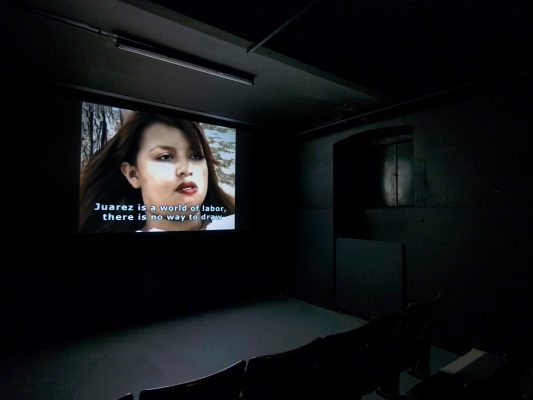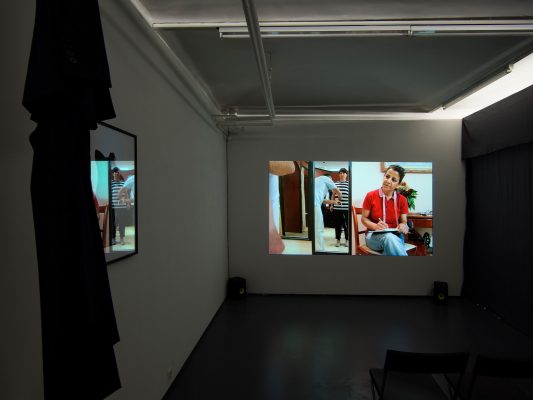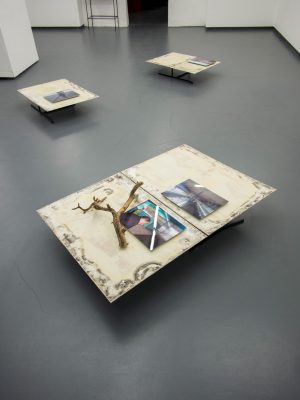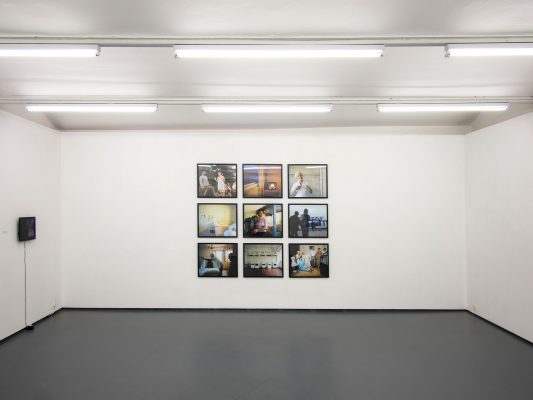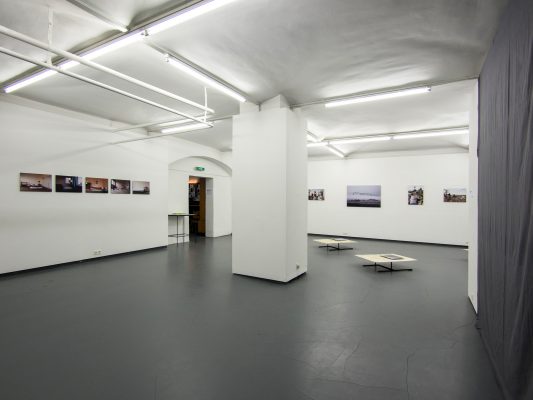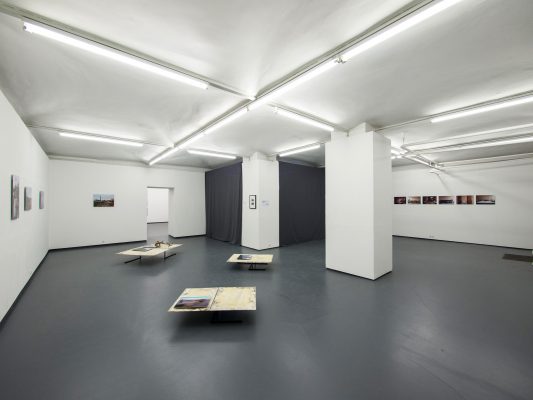Opening: Monday, 2 September at 7 p.m.
Introduction: Philipp Levar
sponsored by: BMUKK, MA7-Kultur, Alsergrund Kultur, Cyberlab, Cooperation partners: Galerie Sfeir-Semler, Hamburg/Beirut und Lisl Ponger
Alongside excessive communication, inordinate mobility is one of the determining factors among the global phenomena of the early twenty-first century. As part of this year’s main focus, the Fotogalerie Wien is showing artworks concerned with the manifold aspects of this subject from differing viewpoints. The three-part series of exhibitions contains positions relating to the interwoven fields of voluntary travelling, borders and border areas and the volatile flows of capital and information with their physical consequences affecting many people. The curatorial team has developed each part of this trilogy together with the artists in an open process, and in so doing set off on a trip that often contains surprising discoveries. The interaction of the various works produces a dialogue that repeatedly renders new moments visible and makes it possible to point up the multi-levelled nature of the subject of mobility. To approach this through the medium of images can also be read as a characteristic of globalization because images are among its most mobile entities that long ago began to ignore all borders whatsoever.
The second exhibition in the series, BORDERS, runs along political dividing lines which are manifested in space but rarely congruent with social and geographical realities “on the ground”. However, the fact that they exist often generates new living situations and economic relationships. The complexity of the global phenomena of state borders is equally reflected in the microcosms of border zones. The vision of a “global village” condenses down into the regulation of border drawing—with its nationally significant and definitive architecture—and its bureaucratic implementation: pre-established criteria of in- and exclusion determine here the possibilities of physical mobility. The works in this show do not only tell of those who cross borders temporarily, but of those who attempt to overcome them once and for all too.
Iris Andraschek and Hubert Lobnig are concerned with the European border regime and its shifts as well as people’s precarious experiences with new borders that are suddenly erected. As a consequence of this they engage with the special aesthetics and architecture of former border posts. Along with their photo works they will be showing objects that were part of a temporary open air installation at the Fratres/Slavonice border crossing point between Austria and the Czech Republic. For two years the installation marked and drew attention to the “vanished” or invisible border which was the result of the fall of the Iron Curtain and European unification: traces of weathering are noticeable, along with the inscription of time and “memory”.
In his photo series Chambres [Quarters](2005) Taysir Batniji presents views of temporary quarters for Renault factory employees in France. These are furnished in a way that is extremely functional and also sparse. These short to middle term residences offer shelter and lodgings and thus stand for the transitory spaces of the international diaspora, in this case voluntary (and paid) migration. They also act as proxies for the many transitional spaces that refugees, people searching for a better life or simply for work often encounter.
The cinema in the FOTOGALERIE WIEN will be showing two video essays by Ursula Biemann. They both look at the multi-layered nature of the social and economic life which border areas create. Performing the border (1999) deals with the living and working conditions in Ciudad Juarez on the US/Mexican border. It is a place where the close linkage between an economic boom and the exploitation of predetermined role models becomes clear. At the time it was a rapidly growing city in which the inhabitants had a predefined social position both in regard to their citizenship and their gender. Europlex (2003) shows the daily trade between the Spanish enclave Ceuta and Morocco, its structures and the creative strategies of the local residents.
The video Winter (2013) by Eva Engelbert which was made in collaboration with sociologist Alena Pfoser shows the paradoxes of a “twinned city” that is divided by a significant political border. It is not only a river that runs between Schengen and the Russian Federation, between Navra and Ivangorod, it also traces the hardship involved in overcoming an abstract entity in daily life. ‘In bed with the Prime Minister’ j one inhabitant makes the point by telling of the difficulties she faces when visiting her husband on the other side of the river. On the other hand others cash in on it by smuggling goods past customs—even if it is only tea hidden in a pair of boots that are allegedly in need of immediate repair.
With a concise and understanding documentation Leona Goldstein shows the “stops along the way” in the migration process in her three part photo series Displaced (2005/2006) with excerpts from her works 6 qm Rechtsstaat, Hold the line and In Italia mi chiamo Anna. The video Au clair de la lune (2006) extends her analysis to reveal the close connections between the economic exploitation by the so-called First World in Africa, the consequent local misery and the desire—or, more accurately, the necessity—that is a result: leaving one’s home so as to be able to survive elsewhere.
Moira Zoitl is presenting an installative work in which the video, Fliehkraft (2010), together with photographs she found in the web of 1960s guest workers in the classical suits of the time form the central core. In addition she will show photos from the series Moira Zoitl trägt einen Anzug von Ahmad Anwari und Yosufi Nagip along with the original suit itself that the two tailors who emigrated from Kabul to Hamburg tailored for her. In this work measuring the body, cutting the cloth and sewing the suit together become a parable for measuring the distance between home and destination as well as for settling in a new place with its special structures and role ascriptions.
(textual support: Philipp Levar)







